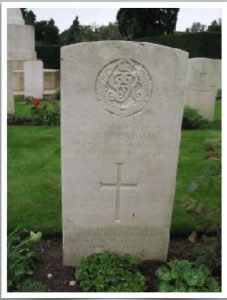Military Foot Police, Military Police Corps

Charles William Gladwin was born in 1876 in Newent, Gloucestershire, the son of Frederick (1851-?) and Elizabeth Ann (née James 1852-1921). It is believed that he had one brother, George (1877-1913).
After leaving school, Charles worked in a bakery, the 1891 census showing him as a ‘baker’s lad’ to a Master Baker, in Bishop’s Cleeve. Ten years later he was a fully fledged baker, working in Newent.
In 1898 he married Mary Jane Spiers at Newent and (as far as can be ascertained) the couple had four children (Hubert Charles (born 1899); Ernest George (1901), Sidney Donald (1907) and Bessie E (1913).
At the time of the 1911 the family lived at 4 Oxford Terrace, London Road, Newent; Charles occupation was stated to be ‘baker and confectioner’ and his wife’s as ‘launderess’.
As is so often the case, very little documentary evidence survives relating to Charles’s military service – approximately two-thirds of service records were lost in the Blitz on London in 1940.
According to the volume of Soldiers Died in the Great War relating to the Military Police Corps, Charles initially served in the Army Cyclist Corps (ACC), with the number 214. However, whilst his Medal Index Card (available via the National Archives) confirms service in the ACC it gives his number as 13345.
The actual Medal Roll for the ACC states that he commenced service on 25 May 1916 and he would have been about forty years of age and served on the Western Front.
The actual date of his move to the Military Police is not known but his number, P/13009 indicates that this was probably in either October or November 1917.
A Pension Record Card for Charles confirming the pension/gratuity given to his widow, states that he died of pneumonia whilst on active service.
The Register of Soldiers’ Effects held at the National Army Museum states that he died at Chiseldon Military Hospital, Wiltshire, a fact confirmed by a death notice posted in the Gloucestershire Echo of 14 February 1919. He died on 9 February, aged 43. It is highly likely that he was a victim of the ‘Spanish Influenza’ pandemic which was raging at the time.
His family appear to have moved to 1, Grove Street, Tredworth, Gloucester sometime after the Census of 1911 and this may account for his burial in Gloucester Old Cemetery, where a standard CWGC headstone marks his grave. He is commemorated on the Gloucester War Memorial.
Researched by Graham Adams 6 December 2019
